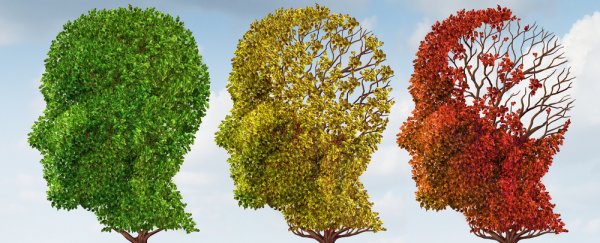People with post-traumatic stress disorder often experience prolonged and exaggerated fearfulness, even when they're completely out of harm's way.
The long-term storage of painful or fearful memories is a defence mechanism of sorts. It can help animals (humans included) evade dangerous and potentially life-threatening situations. But in humans, it can also cause severe psychological distress.
Scientists have tried to understand what enables fearful memories to persist with such vigour (and some researchers have even suggested sleep might play a role). Figuring this out could help alleviate the negative psychological effects endured long after traumatic experiences occur.
Now, researchers funded by the US National Institute of Mental Health think they have uncovered an important clue.
In experiments with rats, a team from the University of Puerto Rico discovered that an old fear memory is recalled via a separate brain pathway from the one used to recall the memory when it was still fresh.
The team has published its findings in Nature.
"While our memories feel constant across time, the neural pathways supporting them actually change with time," explained lead author Gregory Quirk in a press release.
"Uncovering new pathways for old memories could change scientists' view of post-traumatic stress disorder, in which fearful events occur months or years prior to the onset of symptoms."
The researchers say this shifting pathway might account, in some way, for the staying power of bad memories.
In the team's experiments, rats were conditioned to fear a tone associated with a mild shock.
According to the press release, "their overt behavior remained unchanged over time, but the pathway engaged in remembering the traumatic event took a detour, perhaps increasing its staying power."
Within the first six hours of the fear-conditioning, a circuit running from the prefrontal cortex (a region of the brain used for primary functions, such as decision-making and problem-slving) to part of the amygdala (known as the fear hub) was engaged to retrieve the memory.
As time passed, however, the researchers discovered that the memory retrieval was happening via a different circuit - one travelling from the prefrontal cortex to an area in the brain's thalamus, called the paraventricular region (PVT). The PVT then communicates with a different part of the amygdala.
The team was able to spot this shifting circuitry using a technique known as optogenetics, whereby light-responsive proteins are inserted into cells in the brain. This allows scientists to see how and when cells are firing neurons and conveying information to one another.
They have hypothesised that the PVT may integrate fear with other adaptive responses, such as stress, which could strengthen the fear memory.
"In people with anxiety disorders, any disruption of timing-dependent regulation in retrieval circuits might worsen fear responses occurring long after a traumatic event," Quirk said.
In a separate study, also published in the latest issue of Nature, researchers from Stony Brook University in the US revealed the same shift in retrieval pathway for old fear memories at work in the brains of mice.
Source: US National Institute of Health
